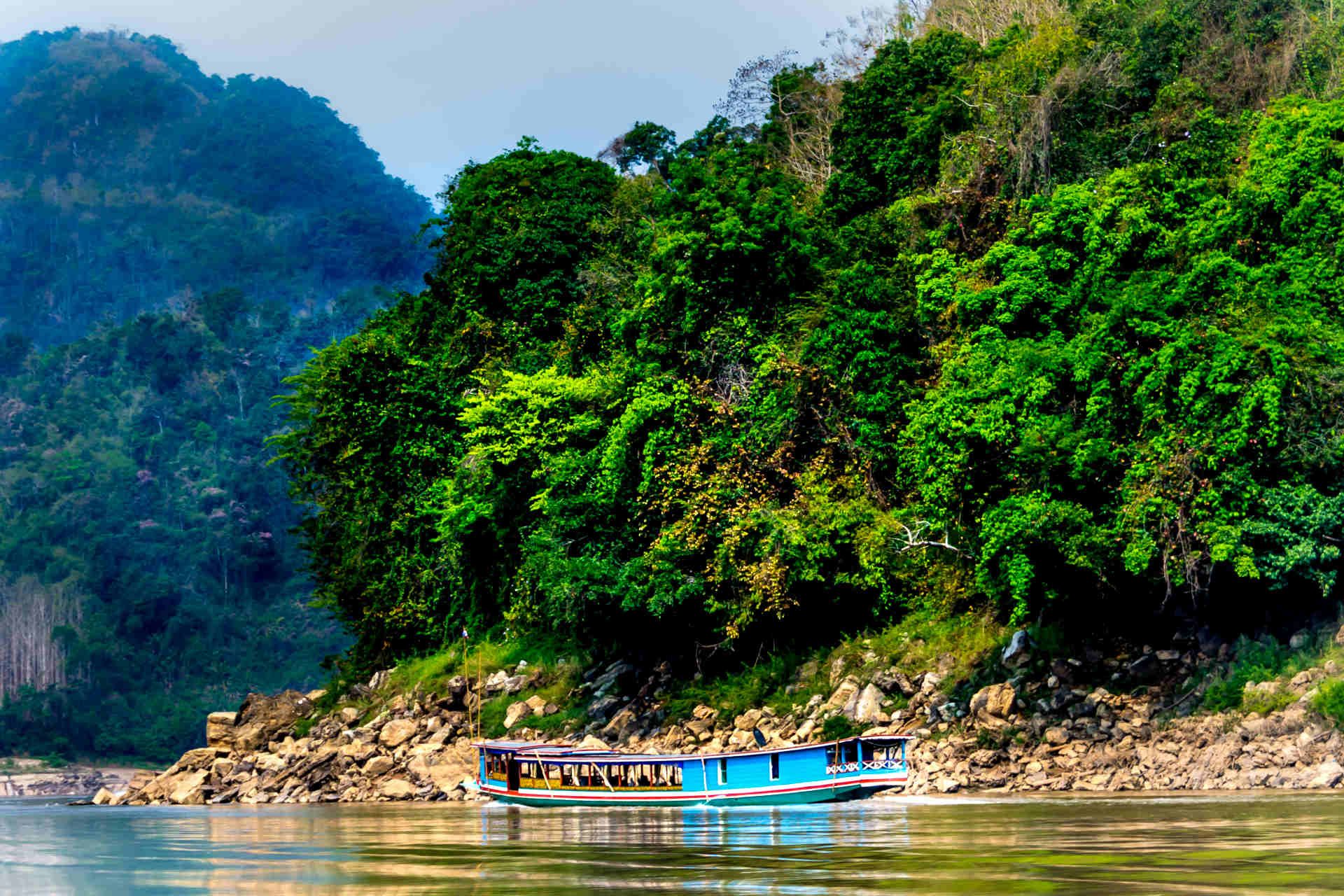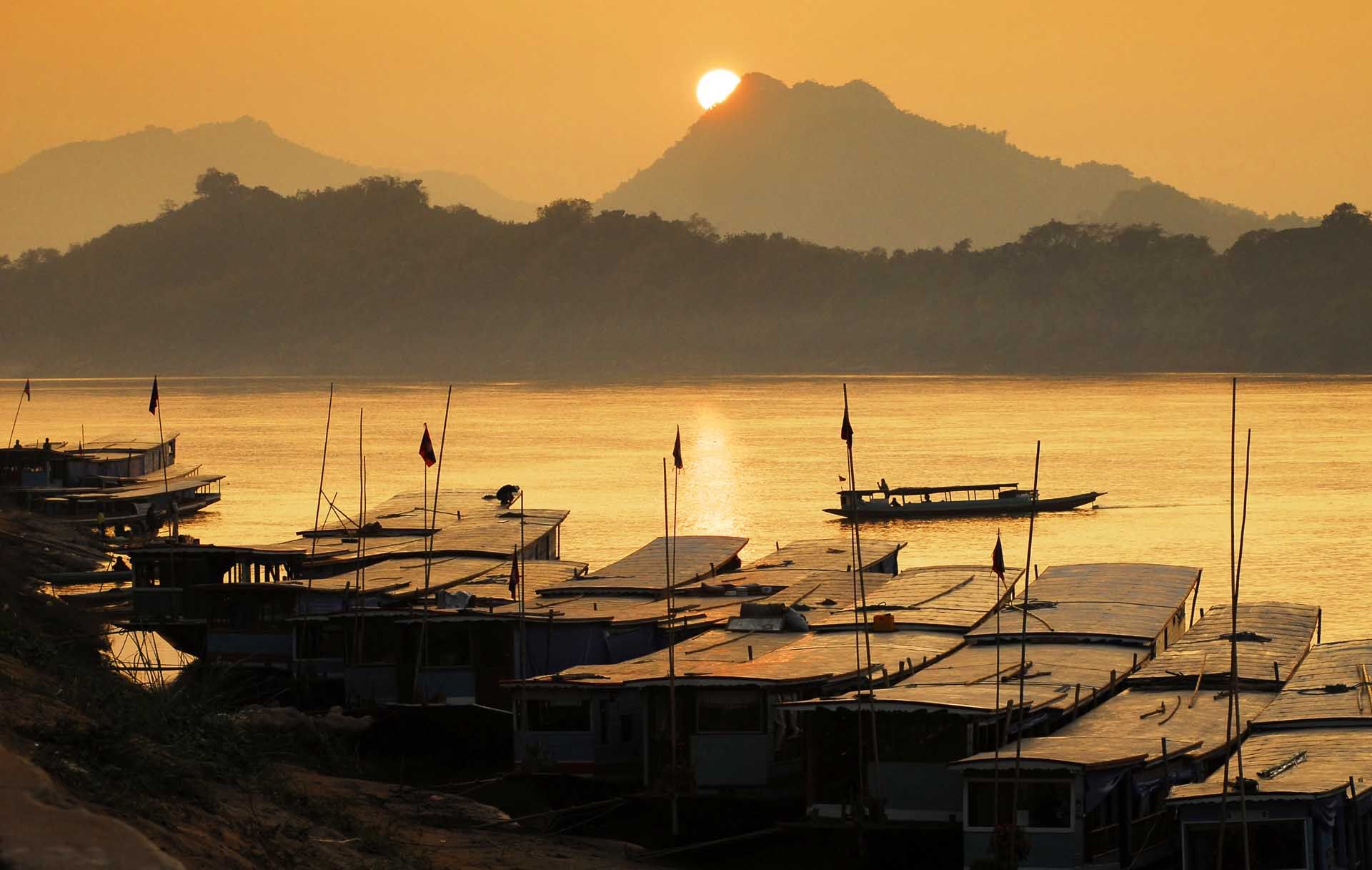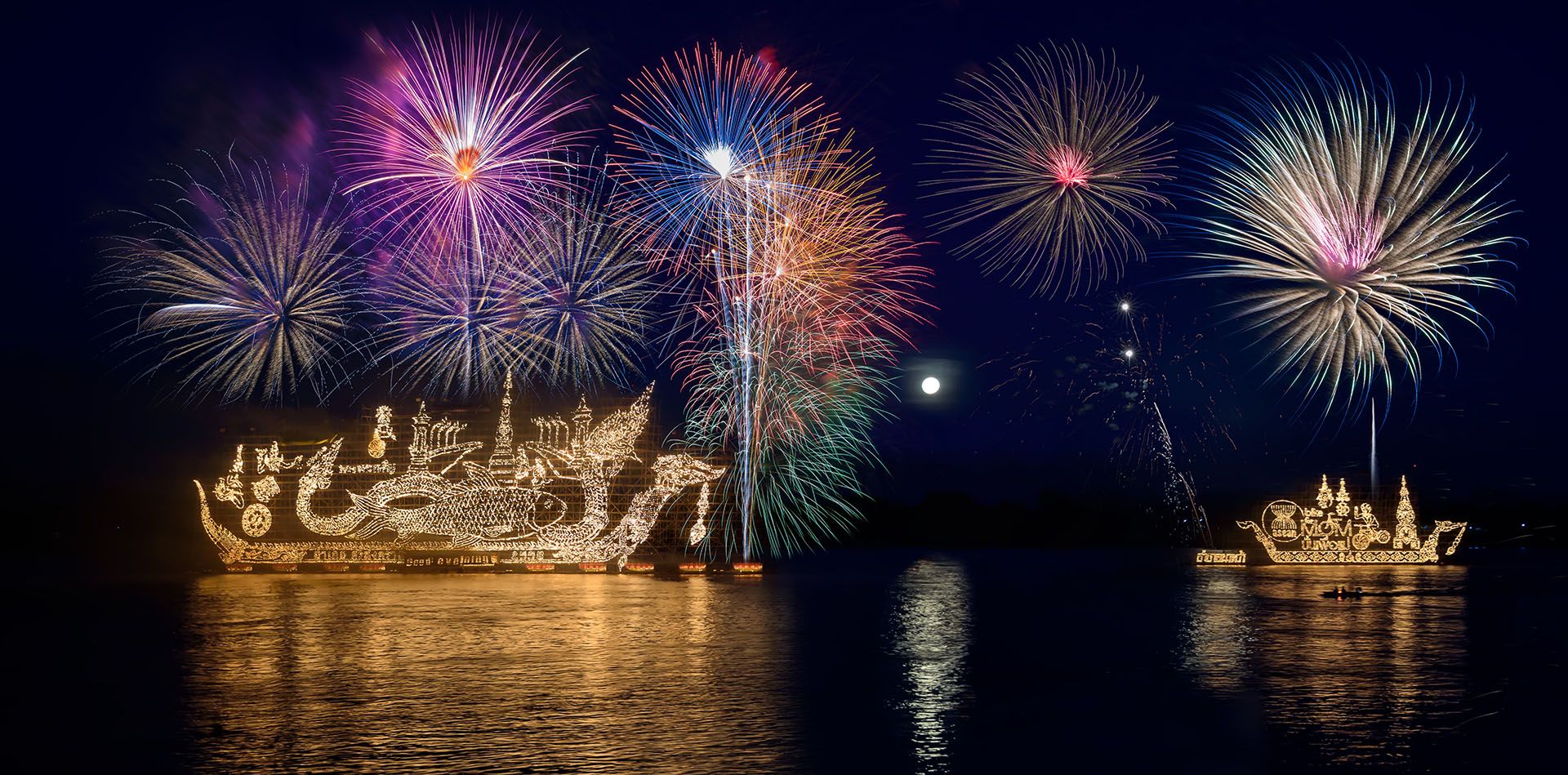Travel advice for Laos
From travel safety to visa requirements, discover the best tips for visiting Laos
Book your individual trip, stress-free with local travel experts
Plan your tailor-made trip with a local expert
Book securely with money-back guarantee
Travel stress-free with local assistance and 24/7 support
No matter what time of year you travel to Laos, you’ll find that each season paints the country in a different colour. And with attractions year-round, there’s no wrong time to go, as such. However, Laos has two main distinct weather patterns: hot and wet (May–October), and cooler and dry (November– April). With that in mind, generally speaking, the best time to visit Laos is November–January. Not only will you get the best of the weather – you’ll also be able to make the most of the activities on offer.
Laos has a tropical climate and its seasons are straightforward: it’s hot and wet from May–October (with August being the wettest and most humid), and dry and cooler from November–April. Within that broad picture, there are regional differences, which can generally be summed up as: the further south you go, the hotter it is. For example, in January, in the middle of the dry season, average maximum temperatures in Pakse and areas in the south are 29°C, which drops to 27°C in Vientiane, and a relatively cool 24°C in Luang Prabang.

Streets of Luang Prabang © Shutterstock
Also, the climate in some northeastern areas – notably Phongsali and Hua Phan (Sam Neua) – can be surprisingly temperamental, even in the hot season. You could have one scorcher of a day, followed by a cold, wet day – which can make you wonder if you're still in southeast Asia.
The monsoon season in Laos falls between May and October, with the north of the country getting more rainfall than the south. This doesn’t mean it rains all day – rather that there are short downpours that usually last no longer than a few hours. However, although the rain doesn't necessarily last for long, the wet weather can make travel difficult, particularly in rural areas. Also, during the monsoon, humidity tends to be high. So, if you’re wondering when is the best time to visit Laos to avoid a daily dousing, plan your trip for the dry season, from November – April.
December is arguably the best month to travel to Laos for all-round favourable weather. The dry and pleasant conditions are ideal for both sightseeing, and all kinds of outdoor activities, such as hiking, cycling, exploring caves and river travel.
To better prepare for your upcoming trip to Laos also read the Laos travel tips we've collected.
This is the best time to visit Laos for a bit of everything: sightseeing, river travel and exploring the countryside.
November to January are the most pleasant months to travel in lowland Laos, when daytime temperatures are agreeably warm, evenings are slightly chilly and the countryside is green and lush after the rains. However, at higher elevations temperatures are significantly cooler, sometimes dropping to freezing point. Vientiane and Luang Prabang witness temperatures averaging around 27°C and 22°C, respectively, in December, while southern regions, such as Pakse, see them climb to around 30°C.
Water levels from the previous months’ rainfall are high, which is perfect for trips along the Mekong River. For those seeking bigger water-based thrills, there are opportunities galore for whitewater rafting and kayaking adventures, on northern rivers, such as the Nam Ou and the Nam Xuang. The best bases for kayaking tours are Vientiane, Vang Vieng, Luang Prabang and Luang Namtha. Also, the scenic waterfalls of the southern highlands are not to be missed.

River cruise on the Mekong © Tetyana Dotsenko/Shutterstock
Dry conditions on land are also ideal – for exploring mystical Buddhist shrines and mysterious caves, visits to elephant camps, coffee plantations and indigenous markets. It’s also the best time to go to Laos for active outdoor pursuits, such as rock climbing, adventurous hikes and cycling tours. For organised day trips and multi-day treks to hill tribes in the far north of Laos, book an excursion from towns such as Luang Namtha, Muang Sing, Luang Prabang or Vang Vieng.
If you’ve reached sightseeing saturation point and had your fill of high energy adventure, why not island hop the picturesque Si Phan Don (Four Thousand Islands) archipelago? Just a few of the islands are geared for tourists, such as Don Daeng and Don Det, but they offer the perfect laid-back getaway and slower pace of life.
For culture, don't miss the excellent Luang Prabang Film Festival in December, which showcases films from Southeast Asia at outdoor locations in the city.
Be aware that the dry season inevitably attracts greater visitor numbers, so well-known attractions are at their busiest.

Elephant bathing on the Bolaven Plateau© Herbert Boeck/Shutterstock
Laos experiences quite a transition from the beginning to the end of spring. Temperatures rise rapidly, reaching a peak in April, when the lowlands are baking hot and humid, and the highlands are, for the most part, equally hot, if a bit less muggy – though there are places, such as Paksong on the Bolaven Plateau, that have a temperate climate year-round. Temperatures typically hover around 36°C in Luang Prabang, a roasting 38°C in Vientiane, and a notch higher in Pakse.
Water levels in rivers are at an all-year low by April, disrupting river travel. But May sees the start of the rainy season and Laos becomes both hot and humid. Trekking can be difficult as trails become slippery, but excursions to cultural sites are still on the agenda – if you’re willing to brave the heat.

Sunset on the Mekong river © i viewfinder/Shutterstock
Due to slash-and-burn agriculture, much of the north, including Luang Prabang, becomes shrouded in smoke from March until the beginning of the monsoon, which can be quite uncomfortable to deal with at times.
But it’s not all about the weather. Spring is perhaps the best time to travel to Laos for its festivals, as two big ones kick off at this time. Laos New Year falls in the middle of April and is big news on the events calendar. Locals wash Buddha statues and water fights typically ensue – the water seen as good luck, and has the added benefit of cooling off the recipient in hot weather. Bun Bang Fai (Rocket Festival) follows in May, which sees homemade rockets launched into the sky, with the intention of persuading the spirits to bring the rains.
Laos is hot, wet and humid during the summer months, literally dampening tourism. The rain affects the condition of Laos’s network of unpaved roads, some of which become impassable and the monsoon hinders certain activities, especially those outdoors. That said, rivers which may be too low to navigate towards the end of the dry season become important transport routes again, after rain raises water levels. Also, the parched landscape bounces back to life: rice fields turn a shade of emerald and tumbling waterfalls are surrounded by vibrant greenery.
It’s also worth noting that, although most of Laos sees rain In June, it doesn’t usually last long, and the rain tends to bring the heat down a notch – meaning you can still pack in some sightseeing.
By July, the rains reach a steady tempo and the temperature hovers around 32°C in the south – again, cooler in the north. For relief from the sweltering heat from the Mekong Valley, head for the coffee bean producing Bolaven Plateau.
August sees rainfall reach a crescendo in August, with showers at their heaviest and lasting longer, and humidity high. Wet and muddy walking trails make hiking difficult, if not impossible, while roads can be slippery and hazardous – with flooding a possibility. Remote areas and caves can be off limits, as well as other popular attractions, such as the Kouang Si waterfalls. Tubing in Vang Vieng also becomes dangerous.
Pack an umbrella and light moisture-wicking apparel for when the weather gets too clammy.
Whilst it rains consistently for most of September, the end of the month brings bright, sunny weather again, with landscapes at their most picturesque.

Lush landscapes of Laos © Kjetil Taksdal/Shutterstock
By October, there’s only the odd smattering of rain now and then and temperatures are knocking around 30°C. As outdoor activities are back on the cards this is the best time to travel to Laos to enjoy its many delights before the throngs return during peak tourist season. It’s also prime time to bag a shoulder season bargain.
The river takes centre stage for October festivals. Boun Awk Phansa, the end of Buddhist Lent, brings the magical spectacle of Lai Heau Fai, (festival of lights), with Luang Prabang the setting for particularly lively celebrations. The town is aglow with lanterns and locals send enormous candlelit paper boats down the Mekong.
The biggest boat racing festival on the calendar also takes place at this time of year. Vientiane, on the Mekong river, is the prime spot, but river towns across Laos hold their own races and accompanying celebrations.
November is no longer wet but rivers are still full from the recent rainfall – time to mosey along the country’s waterways. Adventures outdoors, such as trekking, tubing and swimming are really picking up, and comfortable temperatures make sightseeing and temple-hopping – and exploring in general, highly enjoyable.
Laos festivals are an explosion of colour, where parades, games, music and dancing are all accompanied by copious amounts of lào-láo (a fiery rice alcohol). If you happen to be in a town or village that is gearing up for a festival, consider staying in the area for a bit longer to enjoy the festivities. In rural areas especially, a festival can transform an entire village into a wild, week-long party.

Lai Heau Fai (the festival of lights) © Suriya99/Shutterstock
Because the Lao calendar is dictated by both solar and lunar rhythms, the dates of festivals change from year to year and, even just a few days prior to a parade or boat race, there is sometimes confusion over exactly when it will take place. For the local people this is not really a problem, as the days leading up to and immediately following large festivals are equally packed with celebrations. Read our lowdown on Laos’s annual events to help you plan the best time to visit Laos.
The Makkha Busa Buddist Holy Day (February). Observed under a full moon in February, this commemorates a legendary sermon given by the Buddha after 1250 of his disciples spontaneously congregated around the Enlightened One.
Lao New Year (April). Celebrated all over Laos in mid-April, notably in Luang Prabang, where the town’s namesake Buddha image is ritually bathed.
Bun Bang Fai (rocket festival); (May). Crude projectiles are made from stout bamboo poles stuffed with gunpowder and fired skywards. It’s hoped the thunderous noise will encourage the spirits to make it rain after months of dry weather.
Lai Heau Fai (festival of of lights); (full moon in October). A festival of light. The celebrations are especially lively in Luang Prabang. In the days leading up to the festival residents build large floats and festoon them with lights.
Boun Souang Heua (boat racing festival); (October). There are other boat festivals during the year, but this is the biggest. The Mekong river at Vientiane is the main location, but other river towns hold their own races.
That Luang Festival (November). In the days leading up to the full moon, the great That Luang stupa in Vientiane comes to resemble the centrepiece of a fairground, with street vendors setting up booths in the open spaces around it. The week-long That Luang Festival then kicks off with a mass alms-giving to hundreds of monks.
Bun Pha Wet Festival (December–January). Bun Pha Wet, which commemorates the Jataka tale of the Buddha’s second-to-last incarnation as Pha Wet, or Prince Vessantara, takes place at local monasteries on various dates throughout December or January. In larger towns, expect live bands and dancing.
Header image: Buddhist monk in Luang Prabang © gg-foto/Shutterstock
From travel safety to visa requirements, discover the best tips for visiting Laos
written by
Rough Guides Editors
updated 13.05.2024